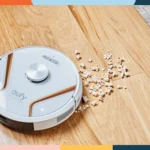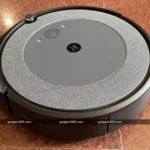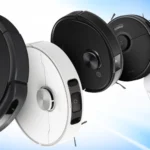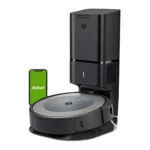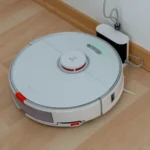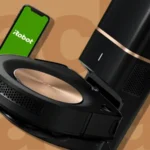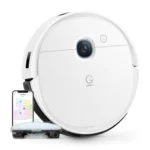Picture this scenario: you’re a busy individual with a cluttered home, and cleaning up every nook and cranny can be quite a hassle. What if there was a solution to make cleaning a breeze? Enter smart vacuum cleaners equipped with the latest technology – smart sensors. These tiny sensors are the key to highly efficient cleaning, making it possible to get the job done quickly, easily, and thoroughly. In this article, we’ll be diving into the world of smart sensors and exploring their significance in smart vacuum cleaners. So, sit back, relax, and let’s explore the magic of smart vacuum cleaners.
The Basics of Smart Sensors
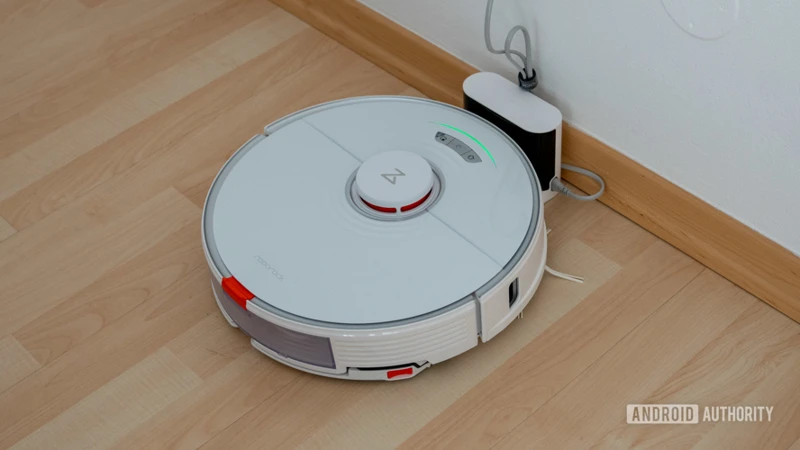
As we delve into the world of smart vacuum cleaners, it’s important to understand the basics of the technology that makes these devices so efficient – smart sensors. Smart sensors are the key to an intelligent and effective cleaning experience, enabling vacuum cleaners to navigate through your home, avoid obstacles, and optimize cleaning patterns. In this section, we’ll take a closer look at what smart vacuum cleaner sensors are, how they work, and how they contribute to more efficient cleaning. Before diving into this topic, make sure to check out our comprehensive smart vacuum cleaner guide for more information on everything you need to know when making a purchase.
What are Smart Vacuum Cleaner Sensors?
Smart vacuum cleaner sensors are sophisticated electronic components that promote efficient and effective cleaning. These sensors allow the devices to perceive and interpret their environment accurately, enabling them to navigate around obstacles and understand the layout of the cleaning area.
Some of the sensors in smart vacuum cleaners include infrared sensors, optical sensors, and acoustic sensors. Infrared sensors detect nearby objects and measure the distance between obstacles for easier navigation, while optical sensors detect floors and map the layout of the cleaning area. Acoustic sensors, on the other hand, can detect sound waves, which help the smart vacuum cleaner to understand the type of flooring it is cleaning.
Here are some of the main types of smart sensors found in modern vacuum cleaners:
- Depth Sensors: These detect changes in height, indicating if the device is moving from one surface to another. They help smart vacuums to climb over short obstacles or detect when there is a step or staircase in the cleaning path.
- Bump Sensors: These help the vacuum cleaner detect obstacles in front of it, such as furniture, walls or other obstructions, and prevent collisions that could damage the device.
- Edge Sensors: These sensors detect when the vacuum cleaner is nearing the edge of a surface, preventing the device from falling off stairs and other high surfaces.
- Dirt Sensors: These help the vacuum cleaner detect specific areas that have more dirt or debris, prompting the device to concentrate cleaning efforts in that area.
Smart vacuum cleaner sensors operate under sophisticated algorithms that translate sensor data into actionable insights for the robot to follow. These sensors use a wide range of technologies, including Lidar, sonar, and gyroscopes, to analyze the robot’s position in real-time while also mapping out its cleaning path.
However, while the technology is impressive, the smart sensors’ effectiveness relies heavily on the vacuum’s suction power, dustbin capacity, battery life, and noise level. These essential factors have to be considered when selecting the best smart vacuum cleaner for specific needs.
How Do Smart Vacuum Cleaner Sensors Work?
Smart vacuum cleaner sensors operate on the principle of detecting the environment and analyzing data from the different sensors to navigate and map the cleaning environment. The sensors can be used in different ways for effective cleaning.
Laser Sensors: Smart vacuum cleaners use laser sensors to generate a three-dimensional map of the cleaning environment. The vacuum cleaner’s on-board computer utilizes this data to navigate the cleaning area, avoiding obstacles, and cleaning the most challenging areas. High-end smart vacuums use advanced mapping technology that creates detailed indoor maps that can be used for automated and more efficient cleaning.
Bump Sensors: Another type of sensor used by smart vacuum cleaners is the bump sensor. Bump sensors are touch sensors mounted on the robot’s body. These detect when the robot collides or touches an obstacle; it then changes its path and direction. This technology allows for efficient cleaning, avoiding damage to the vacuum cleaner, and bumping or damaging furniture.
Cliff Sensors: Smart vacuum cleaner models are also equipped with cliff sensors undersides the device that help it avoid falls, steps, and staircases. When a cliff sensor detects a significant change in elevation, the vacuum automatically stops or adjusts its sync speed.
Camera Sensors: The latest smart vacuum cleaners now use integrated cameras to analyze the environment for better navigation and obstacle avoidance. Robots can map low-light areas, which updates data on the smart devices via Wi-Fi connectivity.
These sensors work together to create an accurate real-time map of your home or office. Analyzing and updating the vacuum cleaner’s current location on the map means it can clean more efficiently without repeating the same location. The on-board sensors detect the amount of dirt on the surface, adjust the suction power, and clean it thoroughly. As a result, smart sensors optimize the battery life and increase the cleaning performance of the device.
Do you want to learn more about the various factors to consider when choosing a smart vacuum cleaner? Please read our informative articles on dustbin capacity, smart home compatibility, pet owner considerations, noise level, and more!
Smart Sensors: The Key to Efficient Cleaning
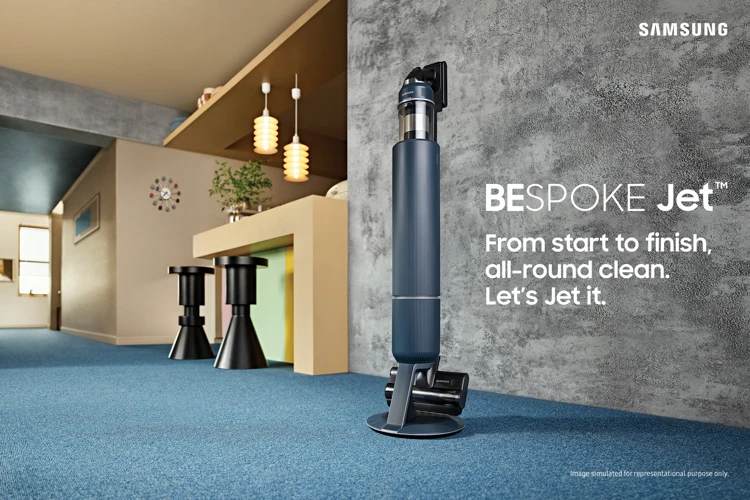
Undoubtedly, the introduction of smart sensors in the world of cleaning has revolutionized the way we clean our homes. These sensors take the smartness of smart vacuum cleaners to the next level. With the help of real-time mapping and obstacle detection and avoidance, smart sensors enable efficient cleaning like never before. They are a crucial component of modern-day smart vacuum cleaners that help ensure that no nook or cranny is left uncleaned. Apart from the basic functions, smart sensors also bring along some advanced features that enhance the user experience significantly. Let’s take a closer look at how smart sensors are the key to efficient cleaning. If you’re interested in how smart sensors work with suction power, check out our article on smart vacuum suction power.
Real-time Mapping and Navigation
Real-time Mapping and Navigation is one of the most important features enabled by smart sensors in smart vacuum cleaners, which allows for efficient and effective cleaning. This feature is made possible by sensors that continuously scan and map the cleaning space in real-time, identifying obstacles, and navigating around them. The data collected by these sensors enables smart vacuum cleaners to avoid haphazard cleaning movements and instead follow a systematic cleaning pattern based on the environment.
To achieve real-time mapping and navigation, smart vacuum cleaners utilize a variety of sensors, including infrared, laser, and sonar sensors. These sensors allow the smart vacuum cleaner to detect objects in its path and adjust its cleaning route accordingly. Additionally, smart vacuum cleaners equipped with mapping technology are able to create an accurate 3D map of the cleaning space, providing them with the ability to navigate complex cleaning environments with ease.
Not only does real-time mapping and navigation improve the overall efficiency of cleaning, it also saves time by preventing repeated cleaning of the same areas. This ensures that cleaning is performed thoroughly and consistently, leaving no area uncleaned. As a result, homeowners can enjoy a cleaner and healthier living space.
It should be noted that real-time mapping and navigation also contributes to the increased battery life of smart vacuum cleaners by reducing the time required to perform cleaning tasks. Instead of aimlessly wandering around and consuming unnecessary power, smart vacuum cleaners navigate through the cleaning space using the shortest possible route, optimizing battery usage.
Real-time mapping and navigation is a critical feature enabled by smart sensors in smart vacuum cleaners that significantly improves the cleaning performance of these devices. By providing accurate and up-to-date information about the cleaning environment, smart vacuum cleaners can navigate efficiently and effectively, leaving homes sparkling clean.
Obstacle Detection and Avoidance
Smart sensors play a crucial role in the efficient operation of smart vacuum cleaners by enabling them to detect and avoid obstacles in their cleaning path. With obstacle detection and avoidance technology, smart vacuum cleaners are equipped to maneuver around furniture, toys, and other objects on the floor, ensuring thorough cleaning while minimizing the risk of damage to household items.
One of the primary benefits of obstacle detection and avoidance technology is improved safety. Traditional vacuum cleaners can get stuck or tangled in cords, rugs, or other objects, which can cause damage or even injury. Smart sensors in smart vacuum cleaners help prevent this by alerting the machine to obstacles in its cleaning path, allowing it to safely move around them and continue cleaning.
Smart sensors can detect objects that are too low to see with the naked eye, such as electrical cords or small toys, which can cause damage or become entangled in the vacuum cleaner’s brush roll. This helps to prevent damage to both the vacuum cleaner and household items, and improves the longevity of both.
Obstacle detection and avoidance technology is especially useful for homes with pets or young children who are prone to leaving their toys on the floor. With this technology, smart vacuum cleaners can navigate around these objects to ensure thorough cleaning. This feature saves time and effort since one does not have to manually move these objects or clean around them.
Some smart vacuum cleaners have mapping technology that allows them to create a virtual map of the room, which includes the location of furniture and other obstacles. This makes it possible for the machine to intelligently plan its cleaning path, so it can move more efficiently around the room.
With obstacle detection and avoidance technology, smart vacuum cleaners provide safe and efficient cleaning for households. Their ability to work around obstacles reduces the risk of damage to furniture or injury to people. A cleaner home and improved longevity of household items. It is a preventive feature that is useful in homes with pets or children who are prone to leaving objects lying on the floor.
Improved Battery Life
One of the major advantages of incorporating smart sensors into vacuum cleaners is the improved battery life that they provide. Smart vacuum cleaners are designed to be energy-efficient, allowing them to run for extended periods of time on a single charge. Here are some ways in which smart sensors help in improving battery life:
- Auto-adjust cleaning mode: Smart sensors can detect the type of surface being cleaned and automatically adjust the cleaning mode accordingly. This ensures that the vacuum is not wasting power by using full suction on a low-pile carpet.
- Efficient path planning: Smart sensors enable vacuum cleaners to map the layout of a room and plan the most efficient path for cleaning. This prevents the vacuum from running over the same area multiple times, which saves battery life.
- Auto-return to the dock: Some smart vacuum cleaners have sensors that allow them to detect when the battery is running low. They will then automatically return to their charging dock, ensuring that they are fully charged for the next cleaning session.
With these features, smart sensors help to prolong the battery life of vacuum cleaners, allowing for longer cleaning times and less time spent charging. This makes them more convenient and user-friendly than traditional vacuum cleaners that require frequent charging.
By improving battery life smart sensors make a significant contribution to the effectiveness of smart vacuum cleaners. From auto-adjust cleaning mode to auto-return to dock, smart sensors provide smart vacuums with better efficiency than traditional vacuums. Investing in a smart vacuum cleaner with smart sensor technology can save both your time and your money in the long run.
Advanced Features Enabled by Smart Sensors
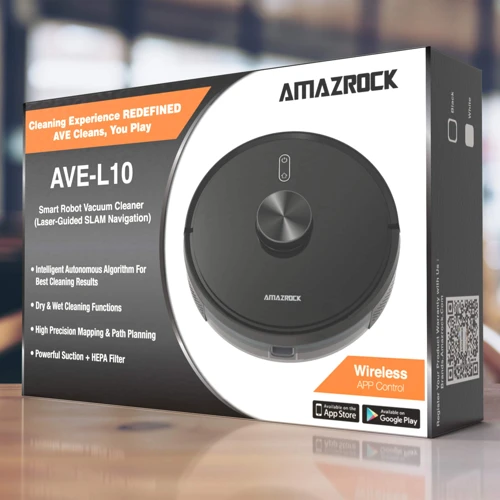
As smart sensors in vacuum cleaners have become increasingly popular, the technology has evolved to include advanced features that maximize efficiency and convenience for users. These features enabled by smart sensors offer a range of benefits that were previously unheard of. These smart sensors enable automated cleaning schedules, customizable settings, and more thorough coverage of cleaning areas. They leverage real-time mapping and navigation, obstacle detection, and avoidance to provide an efficient cleaning experience. Let’s take a closer look at some of the features that have made smart sensors an indispensable component of modern vacuum cleaners. To enhance the cleaning experience even further, smart sensors can be used in conjunction with other cutting-edge technologies such as mapping technology and HEPA filters that provide users with the highest level of cleanliness possible.
Automated Scheduling and Cleaning
Smart sensors play a crucial role in enabling automatic scheduling and cleaning in smart vacuum cleaners. With the help of these sensors, the vacuum cleaner can identify the areas that require cleaning, and clean them without any manual intervention. Let’s explore this feature in more detail:
1. Customizable cleaning schedule: The smart vacuum cleaners are equipped with sensors that can help them create a cleaning routine based on a user’s preferences. Users can program the vacuum cleaner to clean at specific times of the day, on specific days of the week or month, and even in specific areas of the house. This means that users can set the vacuum cleaner to clean before they get home from work, or when they expect guests.
2. Real-time mapping and navigation: Smart sensors help the vacuum cleaner map the area it needs to clean, allowing for efficient and effective cleaning. The map also helps the vacuum cleaner navigate the area without bumping into walls or furniture.
3. Smart cleaning methods: With the help of smart sensors, the vacuum cleaner can switch between different cleaning modes, based on the type of surface it is cleaning. For example, the vacuum cleaner can switch to a more aggressive cleaning mode when it detects a carpet, and switch to a less aggressive mode when cleaning hardwood floors.
4. Efficient Battery Usage: The vacuum cleaner uses smart sensors to optimize battery usage, ensuring that it cleans for as long as possible between charges. The vacuum cleaner can also return to its charging dock when it senses that its battery is low.
Automated scheduling and cleaning is a game-changer for households across the world. With the help of smart sensors, users can sit back and relax while the vacuum cleaner takes care of the cleaning. Customizable schedules, real-time mapping, smart cleaning methods, and efficient battery usage are just a few of the advantages offered by smart sensors.
Thorough Cleaning Coverage
Smart sensors in smart vacuum cleaners are proving to be very useful for efficient cleaning. These sensors are capable of transforming the way we clean our homes. One of the most important features of smart sensors is thorough cleaning coverage. In this section, we will discuss how the smart sensors enable thorough cleaning coverage in smart vacuum cleaners.
To put it simply, smart sensors enable the vacuum cleaners to efficiently cover all the areas that require cleaning. The sensors help in detecting any dirt or debris that might have been missed during the initial cleaning process, ensuring that the home is left spotless. This is achieved by the sensors constantly scanning the area and making adjustments on the cleaning path to ensure that no part of the house is left untouched.
To achieve thorough cleaning coverage, the sensors also provide for more efficient filter systems. These filter systems are highly effective in capturing even the smallest particles in the air that can lead to allergies and other health issues. With the help of smart sensors, the vacuum cleaners can cover every nook and cranny in the house, leaving the air safe and clean to breathe.
Below is a table that highlights some of the key features of smart sensors that enable thorough cleaning coverage.
| Features | Description |
|---|---|
| Laser-guided mapping | Smart sensors use laser-guided mapping to create an accurate map of your home, enabling the vacuum cleaner to navigate through it efficiently and clean every surface. |
| Obstacle avoidance | The sensors can detect objects in its path and automatically adjust its cleaning path to avoid them thus ensuring that no section is left uncleaned. |
| Multiple sensors & cameras | The smart vacuum cleaners have multiple sensors and cameras that help to capture the dirt and debris in the air, ensuring that every inch of your home is left clean. |
| Self-charging | The smart sensors in vacuum cleaners are able to detect when the battery is running low and automatically return to the charging station to recharge, thus ensuring an uninterrupted cleaning experience. |
| Virtual wall | The sensors are capable of creating a virtual wall that enables the vacuum cleaner to avoid and completely miss the specified area, reducing the chances of leaving any dirt or debris behind. |
With the above features, smart vacuum cleaners with smart sensors are proving to be a game-changer in ensuring thorough cleaning coverage in homes.
Customizable Settings and Voice Controls
One of the major benefits of smart sensors in smart vacuum cleaners is the ability to customize settings and control the device using voice commands. This feature allows users to tailor their cleaning experience to their specific needs and preferences. Let’s take a closer look at how customizable settings and voice controls can enhance your cleaning experience.
- Personalized Cleaning Programs: With customizable settings, users can choose which areas of their home they want the vacuum to clean, set the cleaning schedule, and adjust the suction power to suit different flooring types. This level of personalization ensures that the vacuum operates efficiently and effectively for your specific living space.
- Voice Commands: Many smart vacuum cleaners today come equipped with voice control capabilities, allowing users to command the device without ever having to physically touch it. This feature is particularly useful for those who may have mobility challenges or are simply looking for a more convenient way to clean their home. With just a few words, you can turn the vacuum on and off, schedule cleaning cycles, adjust the suction power, and more.
- Integration with Smart Home Systems: Smart vacuum cleaners are designed to integrate seamlessly with other smart home systems, such as Amazon Alexa or Google Assistant. This means that you can control the vacuum through your existing smart home hub, giving you even greater flexibility and control over your cleaning routines.
In short, customizable settings and voice controls are essential features of modern smart vacuum cleaners. With these advanced capabilities, you can enjoy a truly personalized cleaning experience that’s tailored to your specific needs and preferences. Whether you’re looking for a more efficient way to clean your home or simply want to make your cleaning routines more convenient, smart sensors in smart vacuum cleaners have got you covered.
Smart Sensors vs Traditional Sensors
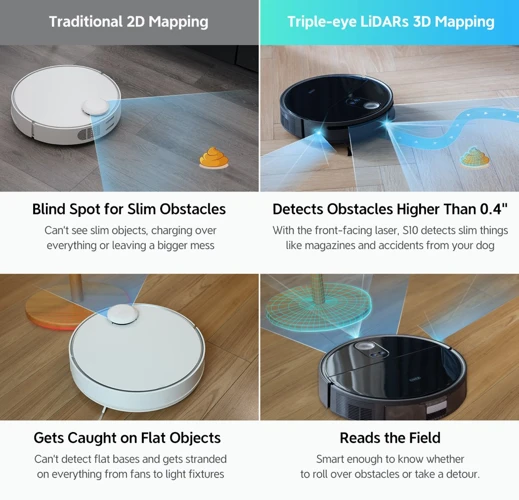
When it comes to vacuum cleaners and their sensors, there are two main types that are often compared: smart sensors and traditional sensors. Traditional sensors are typically infrared-based and they detect obstacles by emitting a signal that bounces back when it hits an object. While they can detect some obstacles, they may struggle with identifying more complex scenarios and objects.
Smart sensors, on the other hand, use a combination of technologies such as lasers, cameras, and infrared sensors to detect objects and environment around them. The data gathered by smart sensors is then processed by algorithms to improve navigation and obstacle avoidance. They can also produce real-time mapping of the surrounding environment, allowing for more efficient cleaning.
The key difference between smart sensors and traditional sensors is their ability to perceive their surroundings in detail. Traditional sensors are limited by their dependency on bouncing signals, while smart sensors are able to use a variety of technologies together to generate a better picture of their environment. This allows them to work together more efficiently with other aspects of the vacuum cleaner, such as the algorithm that powers the vacuum’s movements and cleaning patterns.
Smart sensors can differentiate between different kinds of surfaces and accurately detect both soft and hard flooring, allowing for better control of the vacuum’s cleaning performance. Traditional sensors often struggle to differentiate between different material types, which can result in inaccurate readings and inconsistent cleaning performance.
Smart sensors have significant advantages over traditional sensors in terms of accuracy, versatility, and efficiency. They are a crucial component of smart vacuum cleaners that make them efficient and effective. With the advancements in sensor technology and the increasing demand for smart home systems, it is likely that smart sensors will continue to play a significant role in the development of the next generation of smart vacuum cleaners.
Compatibility with Smart Home Systems
Smart home systems have become an essential part of modern-day living. These systems are designed to offer convenience, safety, and efficiency in a household. Many modern devices are being interconnected under a smart home system, including smart vacuum cleaners. Combining the capabilities of smart sensors and smart home systems provides a superior cleaning experience for homeowners.
Smart vacuum cleaners that are compatible with smart home systems can be controlled by voice commands or through mobile applications. By connecting the vacuum cleaner to a smart home system, the device can interact with other devices in the house. For example, when the smart vacuum cleaner is connected to a smart speaker, it can receive voice commands to start cleaning, stop cleaning or even return to its docking station. This makes it simple for homeowners to control their cleaning process without lifting a finger.
Compatibility with smart home systems makes scheduling of cleaning much easier. Smart home systems can integrate with a smart vacuum cleaner to initiate automatic cleaning at specific times, e.g., when the house is empty. The robot vacuum could start cleaning when the homeowner goes to work, and the house is empty, offering the best cleaning experience without any hindrance. Additionally, the device will return to its dock after completing the cleaning process, eliminating any need for intervention by the homeowner.
Compatibility with smart home systems also provides an intelligent notification system. These systems can alert owners when the cleaning process is complete or when there is an issue with the vacuum cleaner. This feature comes in handy, especially when the owners are away from home, so they can act on any situation early enough.
In a nutshell, smart vacuum cleaners that are compatible with smart home systems offer a host of benefits to homeowners. These benefits include effortless control of cleaning processes, easy scheduling, and real-time notification of the cleaning process status. Smart homes have become the order of the day, and integrating smart vacuum cleaners with smart home systems is a step toward futuristic and innovative cleaning solutions.
Conclusion
In conclusion, it is clear that the integration of smart sensors in smart vacuum cleaners has revolutionized the cleaning industry. These sensors have significantly improved the efficiency of cleaning and enabled automation of the cleaning process to a large extent. With real-time mapping and navigation, obstacle detection, and avoidance features, smart sensors have enabled thorough cleaning coverage and ensured that no spot is left untouched. Additionally, the improved battery life of smart sensors has made it possible for the vacuum cleaners to clean for longer periods without needing to charge regularly.
Moreover, the advanced features such as automated scheduling, customizable settings, and voice controls make it possible for users to have a seamless cleaning experience, allowing them to set up cleaning schedules that fit their preferences. The compatibility of smart vacuum cleaners with smart home systems creates endless possibilities, ensuring that users can control their cleaning devices with ease, even when away from home.
Compared to traditional vacuum cleaners, smart vacuum cleaners with smart sensors are energy-efficient and have superior cleaning capabilities. They do not require human intervention and can be programmed to clean specific areas of the home automatically. These benefits make smart vacuum cleaners with smart sensors a must-have for any homeowner seeking to save time, effort, and resources while keeping their home clean.
In summary, smart vacuum cleaners with smart sensors have a variety of benefits, ranging from energy efficiency and time-saving to automation and customizability. It is no wonder that they are becoming increasingly popular and are expected to take over the cleaning industry in the coming years. Investing in a smart vacuum cleaner with smart sensors is a sound decision for any homeowner looking to save time, increase efficiency, and maintain a clean home.
Frequently Asked Questions
What is a smart vacuum cleaner?
A smart vacuum cleaner is a robotic vacuum cleaner that uses smart sensors and intelligent algorithms to navigate and clean a space without human intervention.
How do smart sensors in vacuum cleaners work?
Smart sensors in vacuum cleaners work by detecting obstacles and mapping the cleaning area to optimize the cleaning process. Some sensors may include cameras, infrared sensors or bumper sensors
What are the benefits of using a smart vacuum cleaner?
The benefits of using a smart vacuum cleaner include improved cleaning efficiency, battery life and customizable settings. Additionally, advanced features such as voice control and compatibility with smart home systems offer convenience and ease of use.
Are smart sensors more effective than traditional sensors?
Smart sensors are more effective than traditional sensors because they offer real-time mapping and navigation, obstacle detection and avoidance, and improved battery life. Traditional sensors rely on pre-programmed movements and may miss spots or get stuck in corners.
Do smart vacuum cleaners work on all types of floors?
Most smart vacuum cleaners work on multiple types of floors, including hardwood, carpet, and tile. However, it is important to check the manufacturer’s specifications to ensure compatibility with specific flooring types.
Can smart vacuum cleaners be controlled with a smartphone?
Yes, many smart vacuum cleaners can be controlled with a smartphone using a mobile app provided by the manufacturer.
How long does it take for a smart vacuum cleaner to charge?
The charging time for smart vacuum cleaners varies depending on the model, but it typically takes between 2-4 hours to fully charge.
Can smart vacuum cleaners be programmed to clean on a schedule?
Yes, most smart vacuum cleaners can be programmed to clean on a schedule. This feature allows the user to set a specific time or day to start cleaning automatically.
What is the difference between smart vacuum cleaners and traditional vacuum cleaners?
The main difference between smart vacuum cleaners and traditional vacuum cleaners is the use of smart sensors and intelligent algorithms to navigate and clean a space without human intervention. Traditional vacuum cleaners require manual operation by the user and may miss spots or get stuck in corners.
How do smart vacuum cleaners fit into a smart home system?
Smart vacuum cleaners can be integrated into a smart home system, allowing users to control the device using voice commands or a mobile app. Additionally, some smart vacuum cleaners can communicate with other smart devices in the home to optimize the cleaning process.

